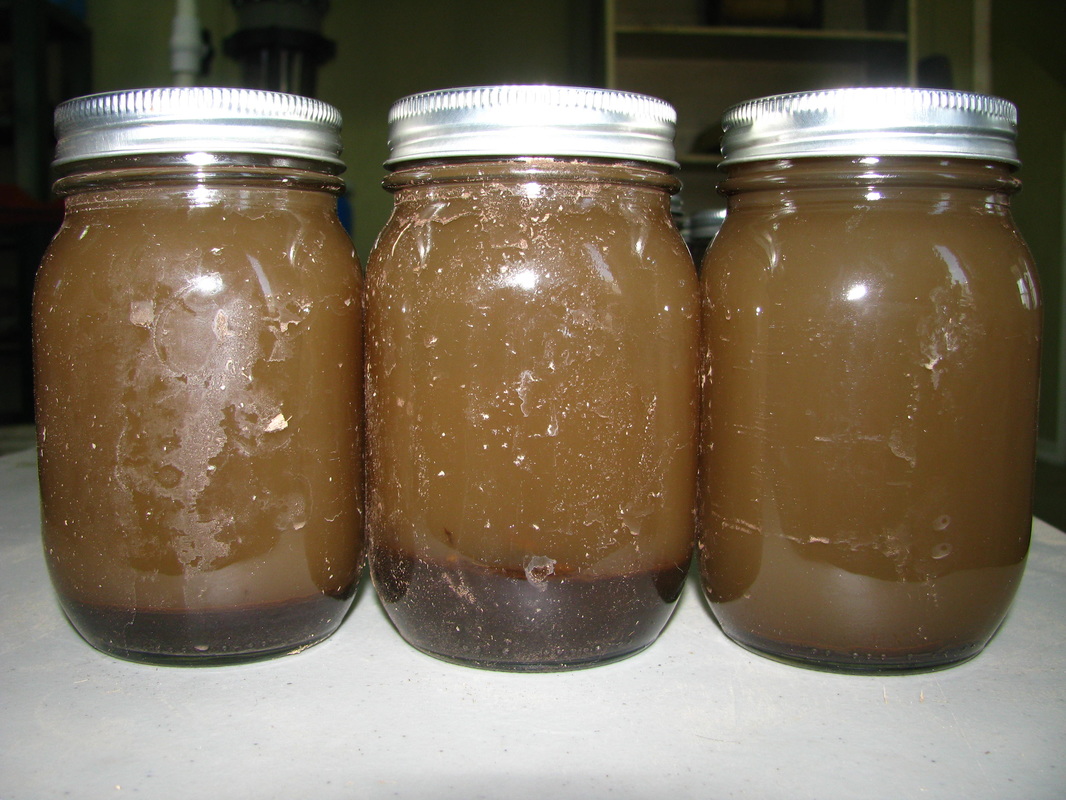| Drum filters are able to remove large amounts of solids from a washwater and concentrate it into the waste stream (Figure 3). The outflow can then continue to further treatment processes to remove finer solids which cannot be caught by the screen. The waste stream, however, would also require further work. The goal is to concentrate the waste to the point where it is the consistency of sludge with minimal water and maximum solids. It is then disposed of, for example, through composting. This filter required optimization to produce a sludge-like waste and that process will be more thoroughly explained in an upcoming article. |
|
A drum filter was placed at a washing facility to test its performance. Drum filters function by allowing washwater to fall through a circular metal screen. As the screen becomes plugged by solids, the water level rises until it trips a sensor. This signals the machine to rotate the drum and turn on a spray bar which cleans the waste off the screen into a collection tray that exits through an outlet. The water used to rinse is pumped out of the lower portion where filtered water is collected prior to flowing out. It can also be programmed to rotate and rinse on a set schedule. The filter tested is rated to handle 1,000 US gallons/minute with a solid load of 10 mg/L using a 30 micron screen. However, the washwater it was treating had a lower flow rate and a higher solid load. It was installed after a barrel washer for root vegetables and before a biofiltration system intended for dissolved solids and nutrients. Theoretically this drum filter would remove suspended solids larger than 30 microns in size, leaving the finer solids and dissolved portion for the next treatment step.
0 Comments
Leave a Reply. |
Project UpdatesFind articles on project-related topics here Archives
December 2016
Topics
All
Article TitlesIntroduction to
Watersheds Lake Simcoe Watershed Nottawasaga Valley Watershed South-Eastern Georgian Bay Watershed Water, Water, Everywhere? The Trouble with Muck: Size Lesson Learned: Bottom- up Aerator to Treat Washwater in Settling Tanks Phosphorus, the Environment, and Farming Nitrogen’s Impact on Air, Land, and Water Water-borne Pathogens and Food Safety Defining Dissolved Oxygen Filter Bags Demonstration Site Organic Matter Breakdown & Biochemical Oxygen Demand Dealing with Cloudy Water Hydrocyclone Demonstration Test What IS Muck? Demystifying Oxidation- Reduction Potential News Release "Technology Investigation: Filter Bags" Drum Filter Demonstration Site Decomposing With(out) Oxygen Flow monitoring Lesson Learned: Drum Filter Optimization Polders & the Holland Marsh Vegetable Washing Process Dry Soil Removal Ultrafiltration & Deionization Demonstration Site News Release "Technology Investigation: Ultrafiltration & Capacitive Deionization" Progressive Passive Filtration Dissolved Air Flotation Clarifying the Solid Removal Process Factsheet Reading Order News Release: "Technology Investigation: Coagulation & Flocculation" Self-Indexing Filter Monitoring Discharge Flows Settling Soil Mass Loading Calculations Lesson Learned: Technology Selection Electrocoagulation Auto-Samplers |



 RSS Feed
RSS Feed
